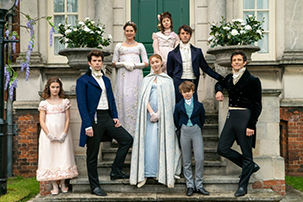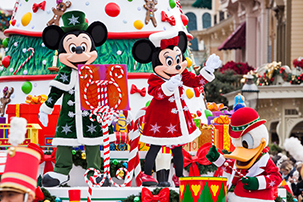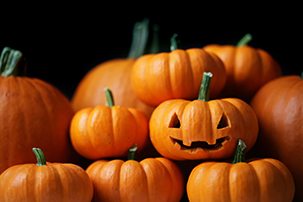Do you ever find yourself wondering when New Year is happening around the world? Me too! On New Year’s Eve Day, I sometimes find myself wondering which countries are celebrating at which hours. I fumble through the news channels on TV or online to see if any major networks are covering the celebrations. I’m a sucker for the festive fireworks!
Wouldn’t it be nice to have a short cheat sheet to know when to tune in each year? I sure think so. I worked out a simple group of charts below to help you figure out when you want to tune in so you don’t miss any of the fun.
To make things easier, I will be using Central Standard Time (CST) for this article. If you live in a different time zone, you will need to make slight adjustments here. Each chart below contains times for New Year’s celebrations at major cities around the world. I selected these cities as they generally have major televised celebrations.
To identify new year around the world, we first need to understand the difference between time zones.
What is CST?
As mentioned earlier, CST is the Central Standard Time, used to measure time in parts of several different countries including the United States and Canada. CST (shown here in yellow) is the second easternmost time zone in the U.S., after the Eastern Standard Time (EST). CST covers all or part of 20 states, such as Alabama, Iowa, Oklahoma, Wisconsin, Louisiana, and Mississippi. You can also find the complete list on the Time and Date website.
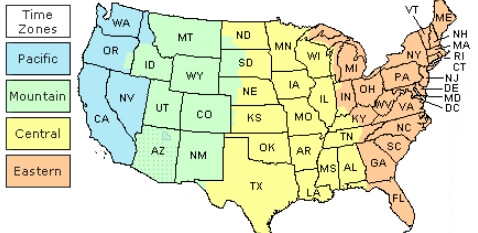

Additionally, in Canada, the CST is the third easternmost time zone, and it covers three territories or provinces. Some communities in Ontario, Canada, use this time zone the entire year. In contrast, only Creighton and Denare Beach partially use it in Saskatchewan (the rest uses it all year). Moreover, the other Canadian territory that uses this system is Manitoba.
CST is also used in Mexico and Central America including countries such as Belize, Costa Rica, El Salvador, Guatemala, Honduras, and Nicaragua. Furthermore, twenty-seven Mexican states use it in the winter, including Distrito Federal and Tabasco.
Be careful when using CST and do not confuse it with Cuban Standard Time (CST) or China Standard Time (CST). Although they have the same abbreviation, the meanings and time are different.
What Time Zones Does the U.S. Have?
The United States has 11 different time zones, but not all are used simultaneously. It is a complex time system for most people, even those who live there, since it changes depending on the current season.
However, currently, only eight-time zones are being used. These include the Hawaii Standard Time (HST), Alaska Daylight time (AKDT), Hawaii-Aleutian Daylight Time (HDT), Mountain Standard Time (MST), Mountain Daylight Time (MDT), Pacific Daylight Time (PDT), Eastern Daylight Time (EDT), and Central Daylight Time (CDT).
Although, there is an argument stating that the U.S. has 12 time zones, not 11. This is because Howland Island and Baker Island are part of the world’s westernmost landmasses as compared to the International Date Line. Therefore, they are the last territories on this planet where any date exists. Consequently, some academics argue that they are part of the theoretical 12th-time zone known as Anywhere on Earth (AoE).
Additionally, the time zones that are not in use in the U.S. right now are Pacific Standard Time (PST), Alaska Standard Time (AKST), Eastern Standard Time (EST), and Central Standard Time (CST). However, all of them will start to be used again from the 6th of November of this year.
So it is safe to say that officially there are only nine time zones. Additionally, the definition of each time zone can be found in the U.S. Code, Title 15, Chapter 6, Subchapter IX – Standard Time. Also, remember that all time zones in the world, or at least most of them, are defined by their offset from Coordinated Universal Time (UTC), also known as Greenwich Mean Time (GMT). When you see “UTC -5”, for example, it means that you are five hours behind UTC.
What Time Is it in the U.S. When a New Year Comes Around the World?
As you know, the time depends on where you live. Let’s see what time is in some U.S. states when New Year comes around the world.
Missouri
| Central Standard Time (CST) | New Year (2023) in the following territory |
| 9 a.m. | Sydney Australia |
| 11 a.m. | Beijing |
| 5 p.m. | Paris, France |
| 6 p.m. | London, United Kingdom |
| 9 p.m. | Most of South America |
California
| Pacific Standard Time (PST) | New Year (2023) in the following territory |
| 7 a.m. | Sydney, Australia |
| 9 a.m. | Beijing, China |
| 3 p.m. | Paris, France |
| 4 p.m. | London, United Kingdom |
| 7 p.m. | Most of South America |
New York
| Eastern Standard Time (EST) | New Year (2023) in the following territory |
| 10 a.m. | Sydney, Australia |
| 12 p.m. | Beijing, China |
| 4 p.m. | Paris, France |
| 7 p.m. | London, United Kingdom |
| 10 p.m. | Most of South America |
How Is the New Year Celebrated Around the World?
New Year’s celebrations are very diverse around the world. Each group of festivities is based on culture, language, food, and sometimes even religion. Some countries have different calendars from the U.S., the Gregorian calendar system, so they commemorate New Year on other days. Therefore, the following are three different countries around the world that have different New Year’s traditions.
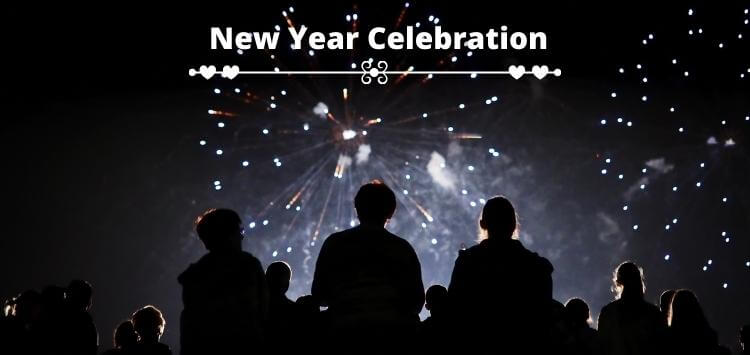

Brazil
Brazil is full of New Year’s traditions and diverse ways of celebrating. Every Brazilian chooses what fits them the most, but the most followed tradition is going to the beach. Since many significant cities are located near the ocean, including Rio de Janeiro and Salvador. Therefore, several Brazilians spend their New Year’s on the beach, drinking, eating, and jumping seven waves to grant good luck.
Wearing white is also a tradition followed by most of the country, and spending this particular date with friends or with family is essential for most Brazilians.
India
New Year’s celebrations in India vary depending on the region since people follow either the lunar or the solar calendar depending on their region and traditions.
For example, in the Gregorian calendar on Baisakhi in Bangladesh and Nepal, which follows the solar calendar, New Year happens during the 14th or 15h of April. Consequently, for the Indians of this region, the month is called Vaishakha, and New Year comes in at the beginning of the month.
Overall, they are based on the Vikram Samvat, a historical Hindu calendar. Thus, similar to other local festivals, India’s New Year is known for its beautiful Hindu religious festivals, full of color and food. As a result, Indians celebrate this lovely day with many games, dances, and parties.
Furthermore, burning an old man is a famous ceremony in which the effigy of an older man is built and burned. This event happens during New Year, and it represents the sorrows of the last year being burned as the new year is starting.
Japan
Called shogatsu (正月), the Japanese New Year celebration is one of the most celebrated holidays in the country, and perhaps the most important. It is often associated with renewal and purification, and it has followed the Gregorian calendar since 1873.
Furthermore, the new year’s day itself is called gantan (元旦) and it is full of special foods, decorations, rituals, and more. Before gantan, they clean their house entirely during omisoka (new year’s eve) to welcome the gods. Finally, when it is night and near the new year’s arrival, families and friends get together to watch famous omisoka T.V. programs and eat toshikoshi soba.
Many other traditions are followed, such as otoshidama (to give kids money in an envelope during New Year) and nengu (to exchange greeting cards and postcards during New Year). All cities will be full of light, especially the winter lights that the Japanese love so much.
Final Thoughts
It is safe to say that the world is full of unique and memorable New Year’s traditions and ways of celebrating. Each location celebrates within their own time zone. Many festivities are broadcast on news channels on television or online. This year, tune in with your friends and family to watch these unique displays from around the world.

